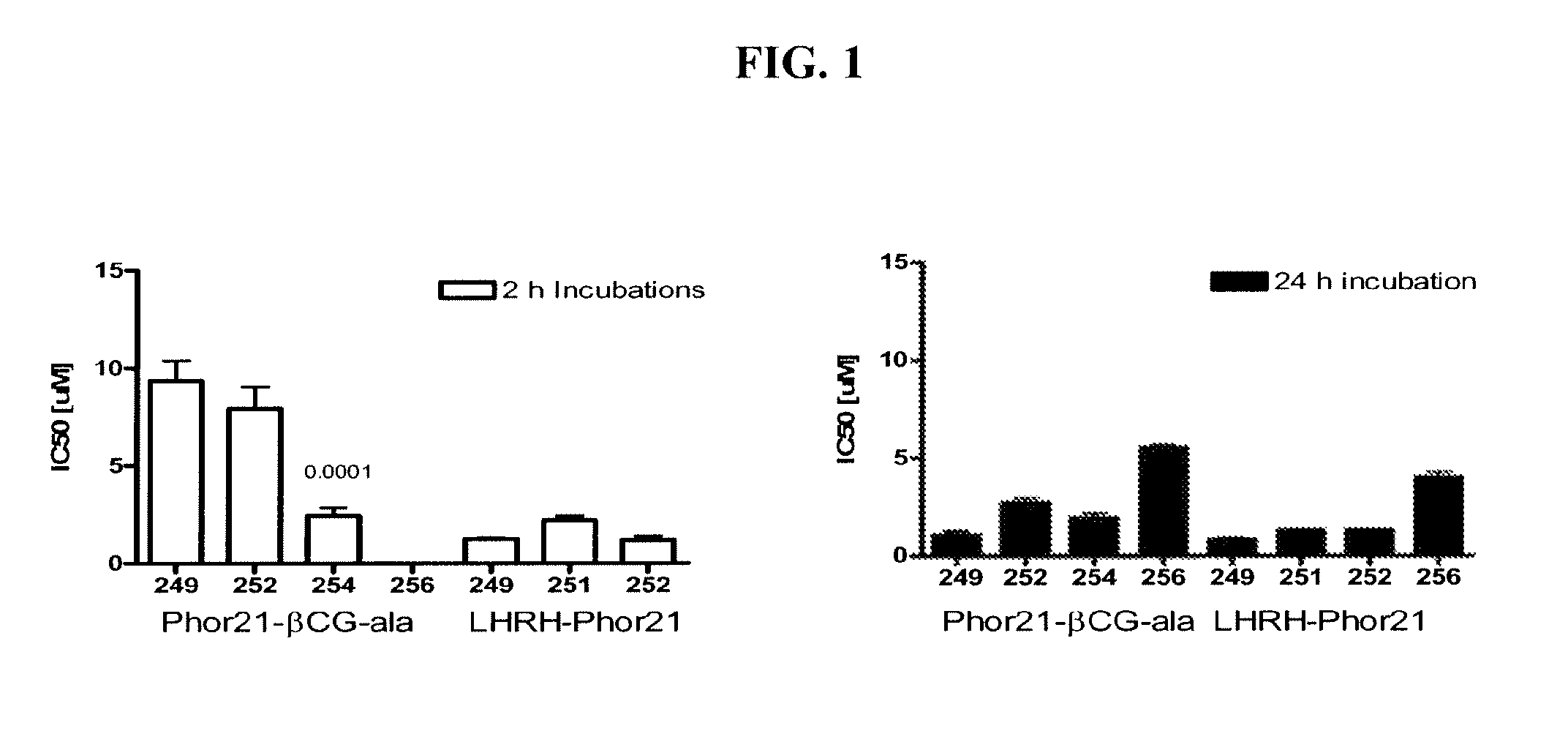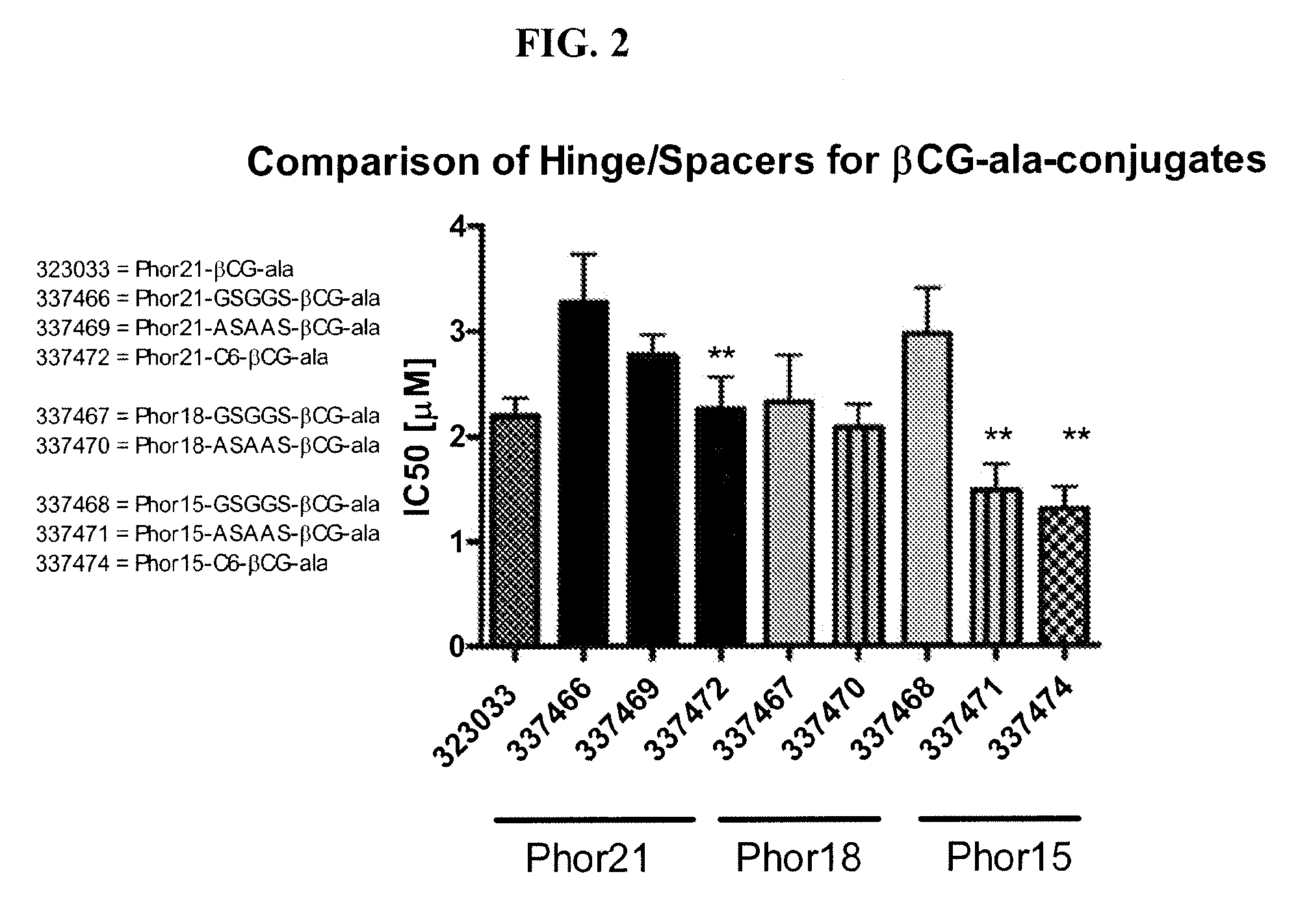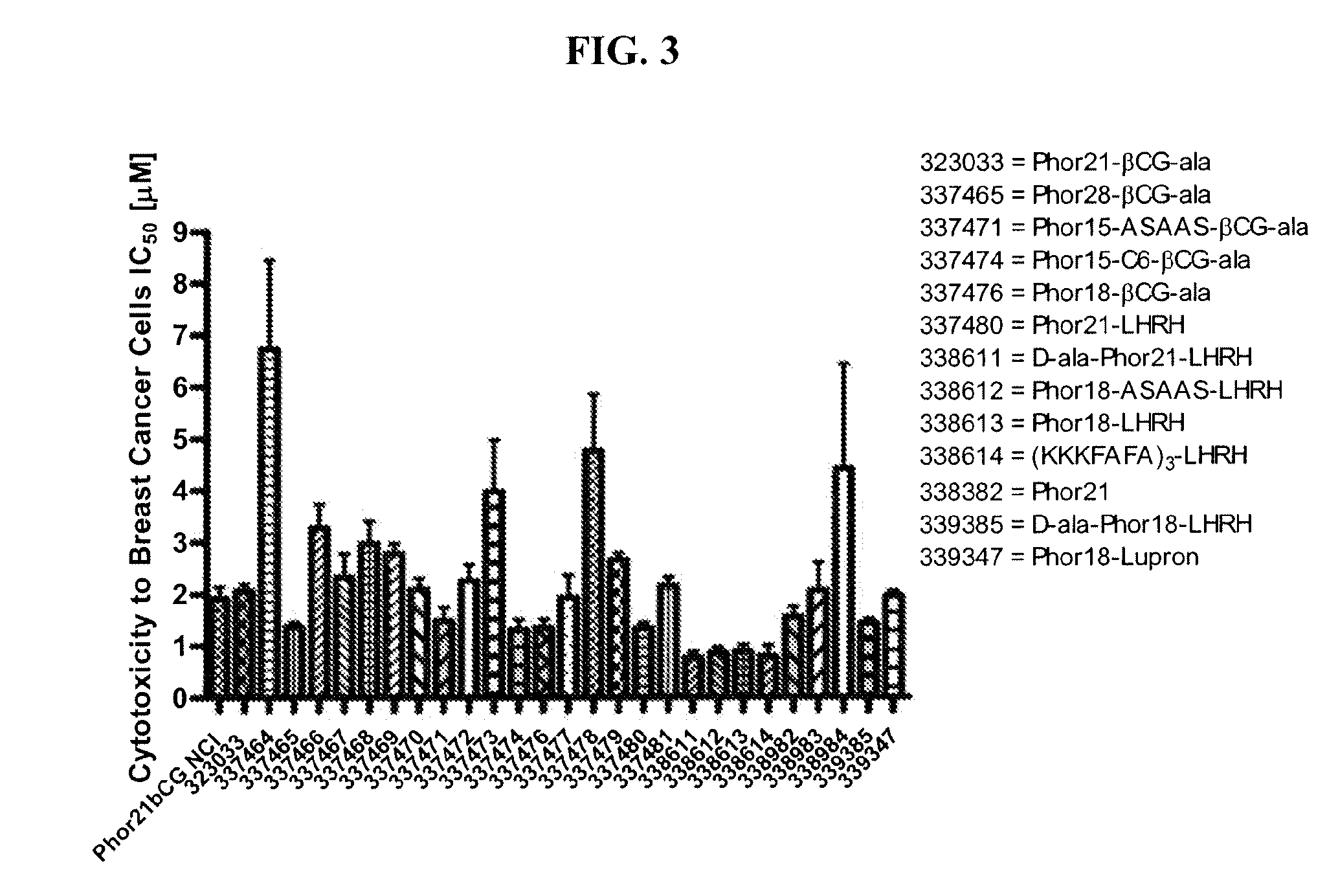Lytic domain fusion constructs and methods of making and using same
a fusion construct and lytic domain technology, applied in the field of fusion constructs, can solve the problems of cell death, fusion constructs are not likely to be immunogenic, and cell membrane disruption,
- Summary
- Abstract
- Description
- Claims
- Application Information
AI Technical Summary
Benefits of technology
Problems solved by technology
Method used
Image
Examples
example 1
[0179]Initial studies included in vitro screening of 28 lytic domain peptides that contained different hinge sequences between lytic peptide moiety and ligands; that contained 30% of D amino acids (D-enantiomers), that were 18 and 15 amino acids in length for the lytic peptide moiety and contained hinge sequence or their D-enantiomers. The introduction of α-aminocaproic acid as a spacer on 21, 18 and 15 amino acid Phor21 analogs was studied. The ligands chosen for study included βCG-ala, a 15 amino acid fragment of the binding moiety of the beta chain from chorionic gonadotropin, and LHRH, a decapeptide that represents a full functioning ligand.
example 2
[0180]This example describes screening for cell toxicity (IC50) and hemolytic activity using a human breast cancer cell line.
[0181]Eighteen βCG-ala and eight LHRH conjugated fusion constructs were studied and compared to Phor21-βCG-ala and unconjugated Phor21 and Phor18 (338913)=CLIP71 peptides. The human breast cancer cell line MDA-MB-435S.luc, which over expresses chorionic gonadotrophin (CG) and luteinizing hormone-releasing hormone (LHRH) receptors, was used to screen at passage numbers 248-252. The MDA-MB-435S.luc cell line was constructed from the MDA-MB-435S cell line obtained from the American Type Cell Culture Collection by stable transfection with the plasmid PRC / CMV-luc containing the Photinus pyralis luciferase gene and an antibody resistance gene by lipofection. The stably transfected cell line was selected using G418 and the clones with the highest expression for the luciferase gene were tested for their LH and LHRH receptor expression.
[0182]MDA-MB435S.luc cells were g...
example 3
[0208]This example describes in vivo studies in a mouse xenograft model of breast cancer with various types and doses of βCG- and LHRH-fusion constructs.
[0209]Female Nu / Nu mice were injected subcutaneously with a MDA-MB435S.luc / Matrigel HC suspension (1×106 cells). The treatment schedule is shown in FIG. 7. In brief, treatment started on day 13 after tumor cell injection and continued on day 19 and 25. Treatments were: saline control, Phor21 (5 mg / kg), Phor18 (5 mg / kg), (KKKFAFA)3 (SEQ. ID NO. 16) peptide—βCG-ala (5 mg / kg), Phor21-βCG-ala (0.01, 1 and 5 mg / kg), Phor18-βCG-ala (0.01, 1 and 5 mg / kg), D-ala-Phor21-βCG-ala (0.01, 1 and 5 mg / kg), baseline 8-12 mice per group, 14 groups. The doses for weekly injections were 5, 1 and 0.01 mg / kg body weight, given as a bolus single injection.
[0210]All groups of mice tolerated the injections well. Only one mouse died at each injection with 337476 at the 5 mg / kg dose. Death was an acute event. All mice in other treatment groups survived. No m...
PUM
 Login to View More
Login to View More Abstract
Description
Claims
Application Information
 Login to View More
Login to View More - R&D
- Intellectual Property
- Life Sciences
- Materials
- Tech Scout
- Unparalleled Data Quality
- Higher Quality Content
- 60% Fewer Hallucinations
Browse by: Latest US Patents, China's latest patents, Technical Efficacy Thesaurus, Application Domain, Technology Topic, Popular Technical Reports.
© 2025 PatSnap. All rights reserved.Legal|Privacy policy|Modern Slavery Act Transparency Statement|Sitemap|About US| Contact US: help@patsnap.com



